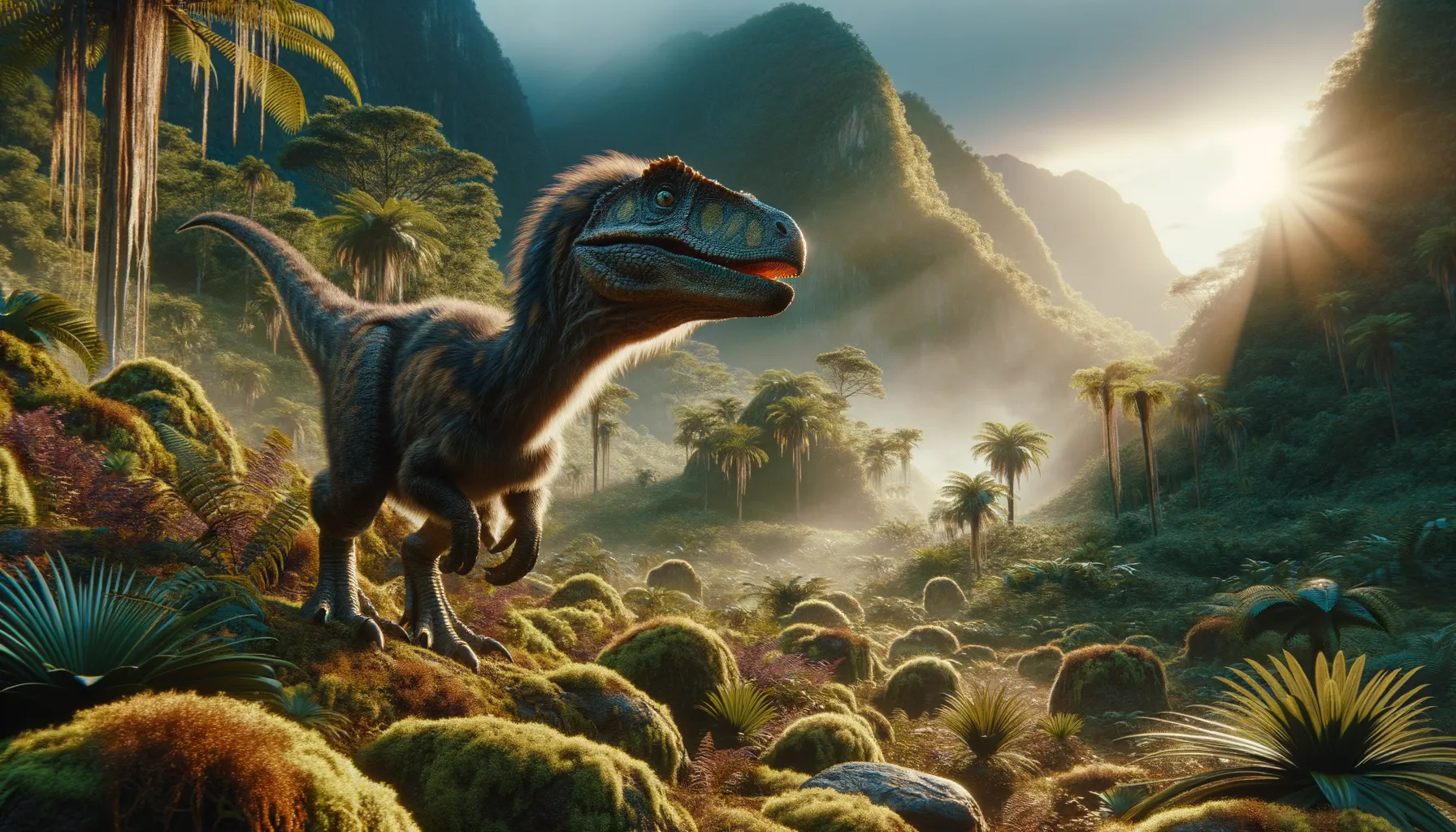
Caenagnathasia
A pint-sized theropod from ancient Asia.
Period
Cretaceous
Length
Approximately 3 feet long.
Height
Roughly 2 feet tall at the hips.
Weight
About 8.8 pounds.
Caenagnathasia was a small, agile theropod dinosaur that lived during the Late Cretaceous period. It is known for its bird-like features and lightweight structure. First discovered in Uzbekistan, this dinosaur has provided important insights into the evolutionary relationships between dinosaurs and birds. Its fossils indicate a lifestyle possibly involving swift movements and an omnivorous diet, adapting skillfully to its environment.
Diet
Caenagnathasia likely had an omnivorous diet. Its small teeth and jaw structure suggest it could eat a variety of foods, including insects and plants. This adaptability helped it survive in diverse environments.
Hunting
Due to its small size, Caenagnathasia may have relied on speed and agility for hunting insects and small vertebrates. It likely used stealth and quick movements to catch prey, avoiding confrontation with larger predators.
Environmental challenges
Living in the Late Cretaceous, Caenagnathasia faced predator threats and competition for food. The varying climate impacted the availability of resources, requiring it to adapt continually. Its omnivorous diet likely provided a survival advantage amidst changing conditions.
Speed
Likely quick due to its small size and light build.
Lifespan
Estimated at around 10 to 15 years.
First discovery
First discovered in Uzbekistan in the 1990s.
Fun Facts
- Caenagnathasia was one of the smallest known oviraptorosaurs, likely weighing no more than a chicken.
- It lived during the Late Cretaceous period, approximately 85 to 70 million years ago.
- This dinosaur was first discovered in what is now Uzbekistan, indicating that oviraptorosaurs had a wide range in Asia.
- Caenagnathasia had a beak-like mouth, typical of the oviraptorosaur group, which likely helped it eat a variety of foods.
- Its name, 'Caenagnathasia', means 'recent jaw from Asia', highlighting its unique jaw structure found in Asia.
- Fossils of Caenagnathasia are quite rare, making each discovery significant for understanding its biology and ecology.
- Despite its small size and rarity, it plays a crucial role in our understanding of dinosaur communities in its region.
Growth and Development
Caenagnathasia went through rapid growth phases, like many small theropods. Young individuals would have developed quickly to avoid predation. This fast growth was probably crucial for reaching maturity in a competitive environment.
Habitat
Caenagnathasia inhabited forested areas with access to water sources. The environment had dense vegetation, providing cover from predators and ample opportunities for foraging. Its adaptations suggest a life primarily spent on the ground with occasional forays into trees.
Interaction with other species
Caenagnathasia likely interacted with various species, including competitors and predators. It may have competed for food with other small theropods. Coexistence with larger dinosaurs probably required vigilance and strategic avoidance.
Natural lifespan
Caenagnathasia had a natural lifespan of around 10 to 15 years in the wild.
Reproduction
Egg-laying, like its ancestors and descendants. Its reproduction likely involved nest building and parental care, common among theropods. The small size of its eggs would have required well-concealed nesting sites to protect against predators.
Social behaviour
While specific social behaviors of Caenagnathasia remain speculative, it may have lived in small groups or pairs. Social interactions could have included cooperative care of young and communal vigilance against predators. This social structure would provide safety and increase survival chances.
Fossil locations
Fossils of Caenagnathasia have predominantly been found in Uzbekistan. The region's Cretaceous deposits revealed remains providing insights into its anatomy and lifestyle. These fossils have been invaluable for understanding the diversity of theropod dinosaurs in Asia.
